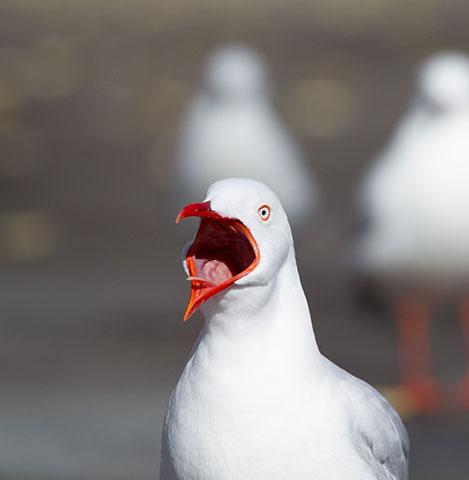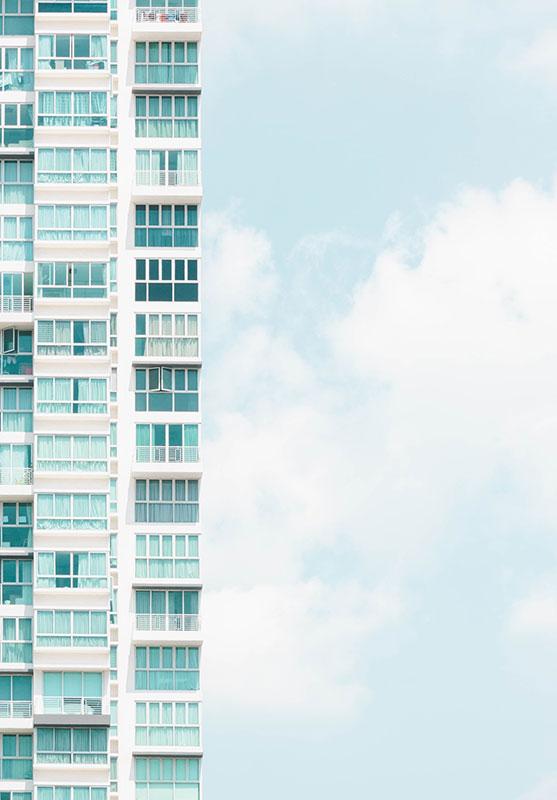There’s a condition afflicting new homeowners, in which they make strange squealing sounds and cry. It’s called “first-time-seeing-the-mortgage-bill” syndrome; and we have to admit, it’s terrifying to think of paying $1,400+ a month for the next 25 years.

But stay calm, there are ways to deal with it:
First, a realistic look at how much the monthly repayments cost
We’ll use four-room HDB flats as our example, since this is one of the most common housing types in Singapore.
The average price is around $430,000*. A bank home loan can cover 75% of the flat’s price or value (whichever is lower; but when you buy from HDB, the bank will usually accept HDB’s price as a fair valuation).
*In practice it will be cheaper than this, after taking into account subsidies like the CPF Housing Grant. Check on the HDB website to see which grants you can receive.
This means you’re borrowing $322,500.
The maximum loan tenure is 25 years, and the interest rate is roughly about 2% per annum at the time of writing. This comes to a loan repayment of about $1,410 per month, for the next 25 years.
Okay, don’t stress. There are ways to deal with this:
-
Know that you can use cash or CPF for repayments
-
Borrow less if you can
-
Remember you can set aside up to $20,000 in your CPF OA
-
Consider taking on another borrower
-
Aim for the 30% mark when picking a home
-
Consider refinancing every few years, to keep the interest rate low

1. Know that you can use cash or CPF for repayments
You don’t need to pay for your home loan in cash; you can pay for it through your CPF Ordinary Account (CPF OA). This is regardless of whether you use an HDB loan or a bank loan.
(And in case you’re wondering, yes, you can use CPF to pay for private property loans as well).
However, there is a limit to how much CPF you can use. You can only use up to 120% of the Valuation Limit (VL)* of your house with a bank loan, after which you’ll need to service the loan in cash. Also, you’ll need to return the CPF monies used with the 2.5% interest rate, when you sell the house.
Knowing this, you can make some plans as to whether you’ll pay in cash or in CPF.
If you’re currently on a tight budget, you might want to pay with your CPF (which you have to contribute to anyway). This will leave you with more cash for daily expenses or emergencies.
Alternatively, if your finances are healthy, you might choose to pay in cash instead. This will allow you to better accumulate your CPF monies for retirement (you can even transfer your unused CPF OA monies into your CPF Special Account, to get a higher guaranteed interest rate).
Speak to a qualified financial advisor to work out which is best for you.
*The VL is simply the lower of the property price or value.
2. Borrow less if you can
When taking a bank loan to buy your flat, 75% of the cost can come from the loan (see above), another 20% can be covered by cash or CPF, and you only need to pay 5% in hard cash.
Using the above example of a $430,000 flat, this means you can borrow $322,500, pay another $86,000 out of CPF OA, and pay only $21,500 in cash.
Split this with, say, your spouse, this may be very affordable to some of you. Split 50/50, for example, each of you would only need $43,000 out of your individual CPF accounts, and $10,750* in cash.
So, what if you find yourself having more than enough cash for the down payment? Well, you can make the mortgage repayments less of a headache, by borrowing less.
For example, say you take 70% financing instead of the full amount (a loan of $301,000, for a $430,000 flat). The monthly repayments fall to about $1,275 per month, instead of around $1,410.
That gives you an extra $135 a month that you can save, spend for fun, etc. It’s not an insignificant amount either, over a long period like a 25-year loan.
*Don’t panic about the big numbers. Put it in perspective - you can get that amount by just saving $180 a month, five years prior to buying a house.

3. Leave $20,000 in your CPF OA as a safety net
When using your CPF OA for the down payment, you should consider leaving up to $20,000 in it. Now, you don’t have to set aside all $20,000 but consider setting aside at least six months of the mortgage ($8,460, in the case of our four-room flat).
If you get retrenched, can’t work, etc., this ensures you can service the mortgage while you recover. In a worst-case scenario, six months gives you time to sell your flat and downgrade.
4. Consider taking on another borrower
If the budget is really tight, see if there’s any way to take on another borrower, such as a parent (if they have no outstanding home loan of their own), working children, or a sibling.
This does mean adding their name to the deed – you can’t be a borrower without also being a co-owner. However, one added contributor can make the mortgage bearable in hard times.
Make sure the co-borrower is someone you trust and get along with though (e.g. you don’t want disputes later, such as when you want to sell the house and they won’t let you).

5. Aim for the 30% mark when picking a home
HDB already applies a Mortgage Servicing Ratio (MSR), which prevents you taking a loan if the repayments would exceed 35% of your monthly household income. If your monthly household income is $8,000 per month, for example, your loan repayment cannot go beyond $2,800 per month.
We suggest keeping it to 30%, however, to have an easier time with your mortgage (i.e. no more than $2,400 per month). This leaves you with 70% of your income, so you can still afford savings and long-term investments for retirement.
This is especially important to keep in mind if you’re buying private properties. A private property is not subject to the MSR, but to the Total Debt Servicing Ratio (TDSR) instead. The TDSR is more liberal, as it allows your total debts (inclusive of credit cards, personal loans, etc.) to reach up to 60% of your monthly income.
But that’s speeding without a safety belt; when you commit 60% of your monthly income to debt repayment, there’s a high chance you’ll be living pay cheque to pay cheque, or with minimal long-term savings.
Try to keep your debt ratio to 30% or below. This isn’t a game to hit the maximum ceiling.
Remember, the interest rate on a property loan can change; if you have a SIBOR loan, for example, it tends to rise every fourth year or beyond. Here’s an upside though: the interest rate on your savings account, or your CPF account, is often higher than your home loan interest rate.
For example, your CPF OA grows at 2.5% per annum, even though home loans are usually around 2%. If you have a savings account such as a DBS multiplier account, you can earn interest of up to 3.8%. It’s always good when you can grow your money faster than your loan.

The most important rule is to start small
Remember, you can always sell and upgrade to a bigger home later. Don’t make the mortgage for your first home a nightmare, by borrowing more than you can handle. As far as possible, try to keep the total cost of your house below five times your annual household income. If you stick to that, you’ll usually find the mortgage painless.
To find the right-sized home for you (in both space and price), check out options on DBS Property Marketplace.
